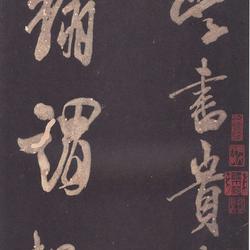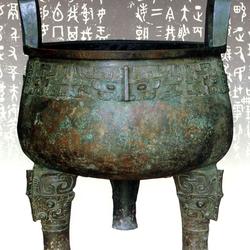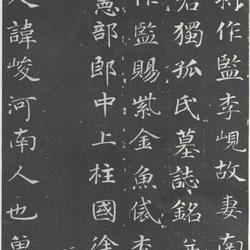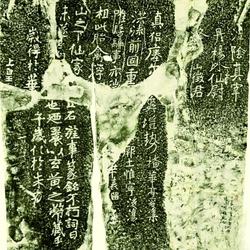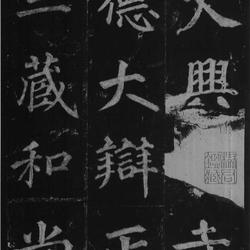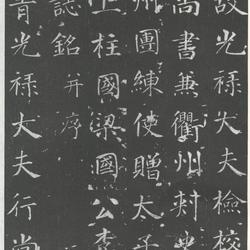High-definition appreciation of a large collection of Jin Nong's lacquer books
Jin Nong (1687-1763) was a calligrapher and painter of the Qing Dynasty and the leader of the Eight Eccentrics of Yangzhou. The names were Shoumen, Sinong, Jijin, Mr. Dongxin, Jiliu Shanmin, Qujiang Waishi, Xiye Jushi, etc. He was a native of Qiantang (now Hangzhou, Zhejiang), and he was a commoner all his life. He was fond of traveling, but he returned home without encountering anything. He lived in Yangzhou in his later years, selling calligraphy and paintings to support himself, and became the first of the eight eccentrics of Yangzhou. He is fond of novels and loves to learn, and specializes in poetry and calligraphy. His poetry and prose are ancient and unique, and he is good at identifying them. Calligraphy created a flat-stroke calligraphy style with both regular script and official script, which was called "lacquer calligraphy" at the time. He didn't start painting until he was fifty-three years old. The shapes of his paintings are unique and ancient. He is good at using light ink and dry brush to create flower sketches, and is especially good at painting plum blossoms.
what islacquer book,lacquer bookA calligraphy name. It has two meanings: one refers to words written in lacquer. It is said that Confucius "wrote Sutras on the walls of his residence with lacquer", hence the name. The second refers to Jin Nong, a calligrapher in the Qing Dynasty, who broke the circles into squares, as if writing with a lacquer broom, which is known as "lacquer calligraphy".
Jin Nong's lacquer calligraphy claimed that he was proud of the two steles "Guoshan" and "Tianfa Shenprophe", "Yu Jin got the two steles "Guoshan" and "Tianfa Shenprophe". The calligraphy is very ancient, and they were cut into books. Win with courage.”
Jin Nong's use of the pen contradicts the ancient saying of "center forward". He uses the pen as a knife and moves purely on the side peaks to cut the heads and tails of silkworms and geese, making the two ends of the strokes neat, thick horizontally and thin vertically. The clumsiness hides skill, and the white cloth makes it more dangerous. Feng Yuanyi's ancient style, simple and unique, has completely transformed the two monuments of "Guo Shan" and "Tian Fa Shen Prophecy". He is unique and unique in the world of Chinese calligraphy.
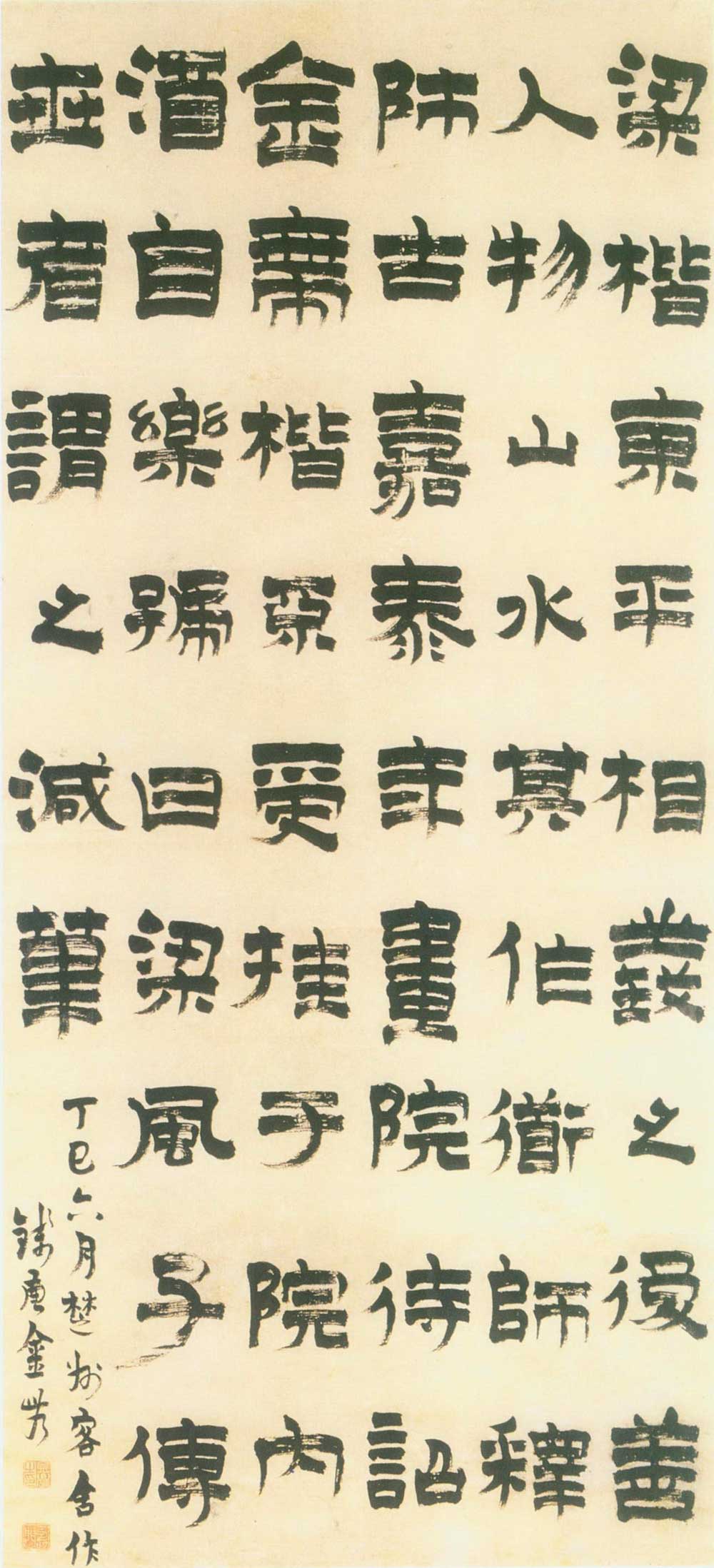
Scroll of Liang Kai's Biography, Paper, 1737, 102.8cm long, 47cm wide, collected by the National Museum of China
"Liang Kai Zhuan Zhuan" is the earliest work of Jin Nong's lacquer calligraphy. In addition to the characteristics of using brushes to form a solid structure, Jin Nong also focuses on thick and thirsty ink, and his strokes are thick and astringent, resulting in "flying white". The "flying white" feature is the basic feature of lacquer calligraphy that was perfected by Jin Nong in his later period. "The pen is like a broom but not a broom" and "the silver machine spits ice silk" reveal the foundation of Jinnong's artistic creation.
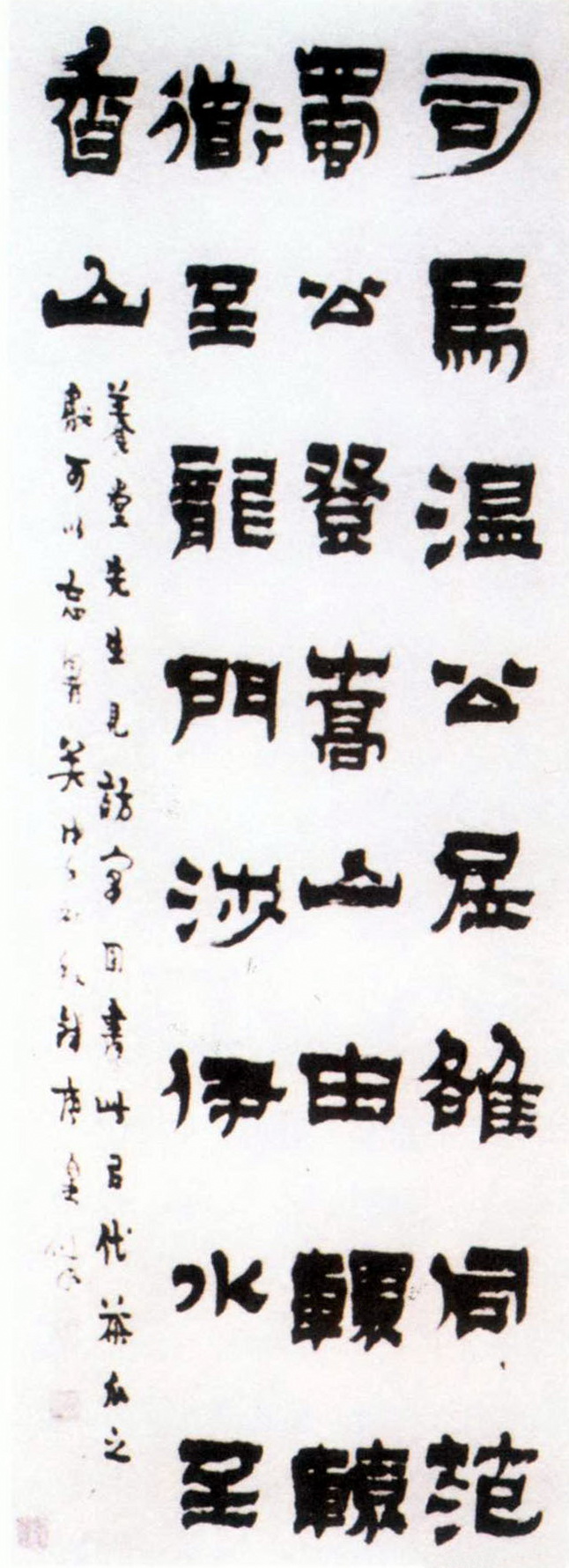
SimaAbandoned lacquer scroll of light, paper, 1738, length 95.5 cm, width 31.5 cm, collected by Taiwan Lanqian Museum
"The Lost Story of Sima Guang" is a representative work of Jin Nong's transition period from official script to lacquer script. Jin Nong deliberately enlarged the horizontal strokes, exaggerated the flat edge of the brush strokes, and exposed the pen marks in the "inverted" style.
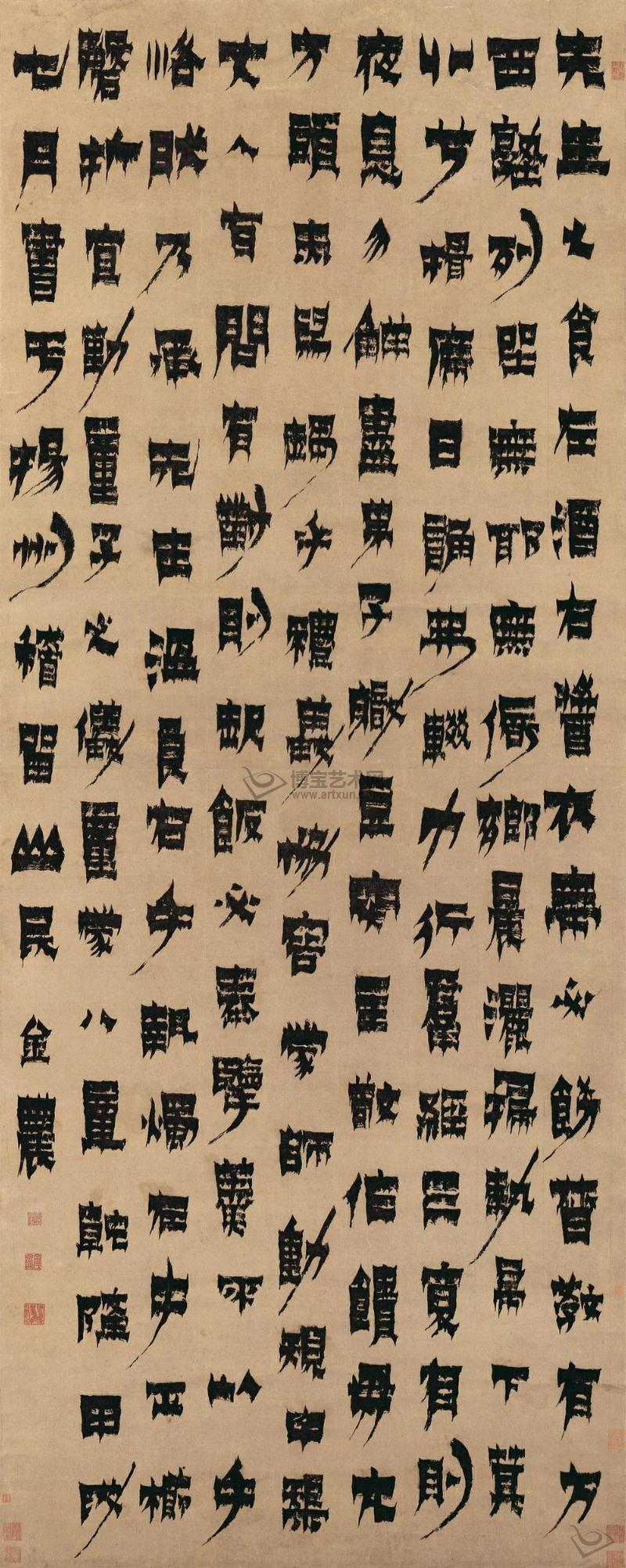
"Eight Chapters of Children's Meng", 1754, 229.2×92cm, vertical scroll, paper
"Eight Chapters of Childhood"It is a typical representative of lacquer calligraphy. The horizontal strokes of the brush are cut straight down and swept to the right, as if they were arranged with a brush, while the vertical strokes are more subtle, and the "upside down" shape of the writing is more distinct. It is longer and more varied than when the lacquer calligraphy was first formed. Rich. Its cutting, straightforward, and artistic decorative qualities form the characteristics of a perfect style of lacquer calligraphy.
Explanation: Mr.’s food consists of wine on the left and sauce on the right. Clothes and belts must be in order, and supervision must be done properly. Sitting in rows in the West School, there is no one to lean on. In the morning in the countryside, I sweep and sweep, holding the broom and picking up the leaves. We bow to the mat on the grass, and we can't stop chanting every day. Practicing the group sutras diligently will lead to three-step recovery. Do not untie the breath of your clothes and fulfill your duties as a disciple. Dou Tu is the master of respect, and it is used as a gift to the mother. The square head and red pewter tend to be Li Xi. Xie Rongmeng master, move the rules in the middle. When an adult asks a question, he or she will respond. The rice must be served, but the soup cannot be taken with the hands. A little delay is accepted, sir, gentle and kind. The right hand holds the candle, and the left hand holds the comb. The chime should be folded diligently, as is the etiquette of a child. Chapter eight of Tong Meng. In July of the Jiaxu period of Qianlong (1754), the book was written in Yangzhou. Jiliu mountain people are Jinnong.
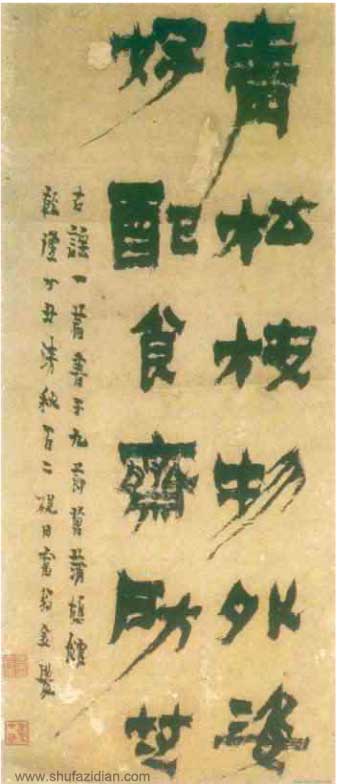
"Scroll of Ancient Ballads", created in 1757, on paper, 58.5 cm in length and 24.5 cm in width, collected by Guangdong Provincial Museum

"Scroll of Seven Unforgettable Poems" Unknown date, paper, length 133.6 cm, width 33.7 cm, collected by Sichuan Provincial Museum
In his later years, Jin Nong created the "Qibi Bafen" based on lacquer calligraphy. "Scroll of Ancient Ballads" and "Scroll of Seven Unique Poems" are relatively typical works. Compared with ordinary lacquer calligraphy, "Kebi Bafen" has a leaner and more elegant style, and is not as rich and square as lacquer calligraphy. His brush strokes are often astringent and clumsy, and his strokes are dry and white, hence the name "Thirsty Brush Eight Points".
Other works by Jin Nong Qishu
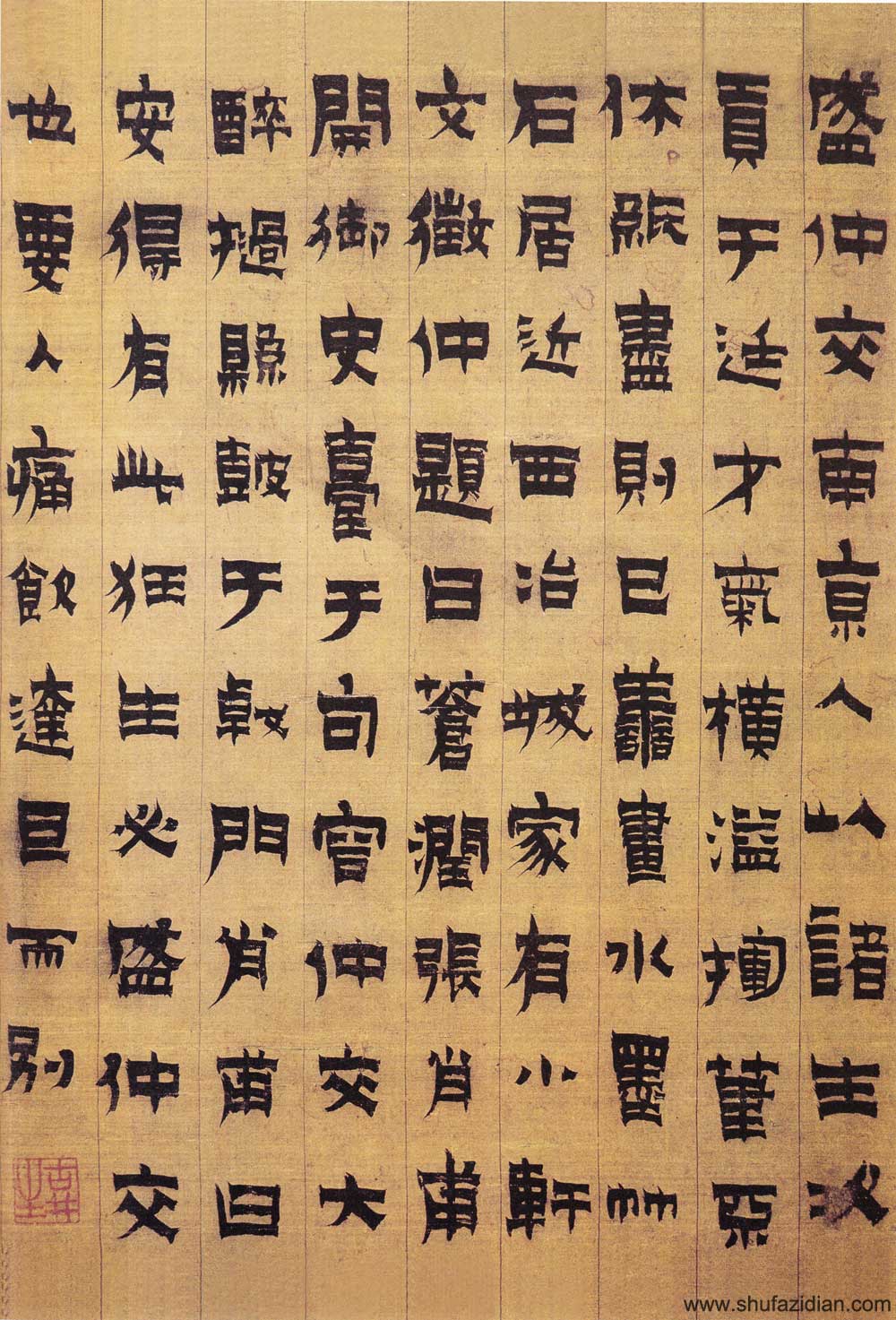
Lacquer calligraphy about the deeds of Sheng Zhongjiao, unknown date, paper, length 43.2 cm, width 32.5 cm, collected by Nanjing Museum
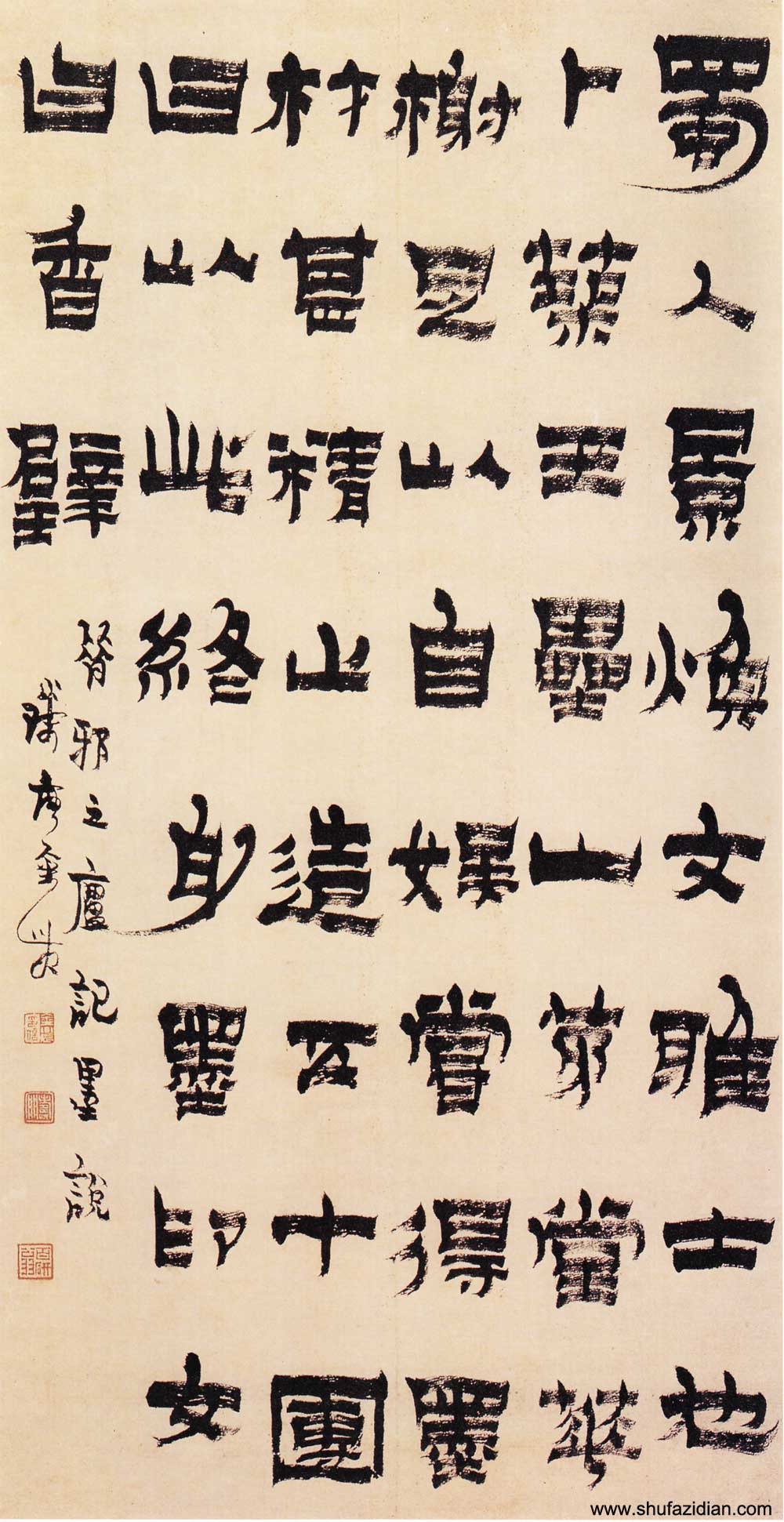
A vertical scroll written by Jing Huan, a native of Shu, written in lacquer calligraphy and ink, on paper, 84.9 cm in length and 44.7 cm in width, collected by Yangzhou Museum
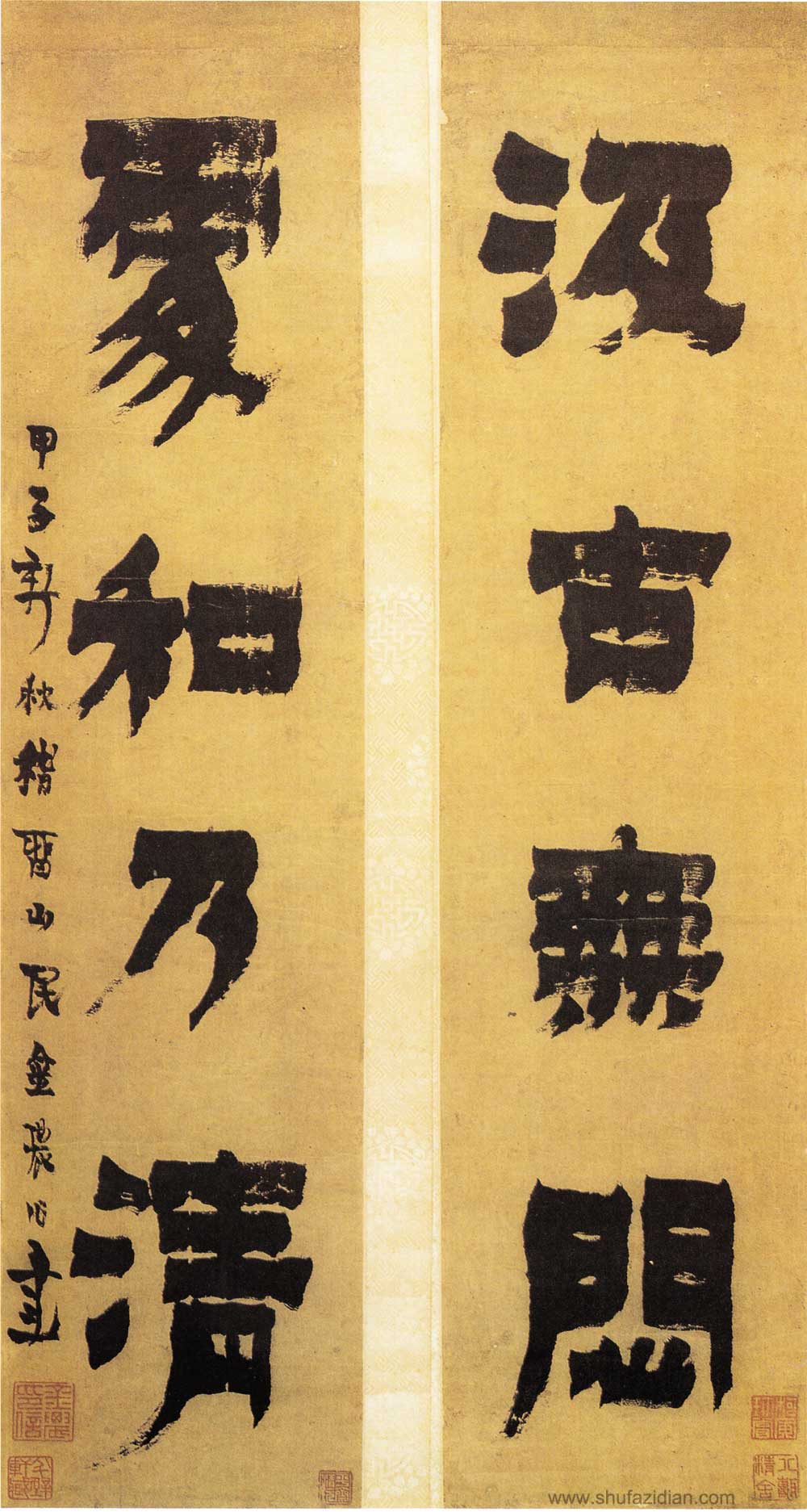
Lacquer calligraphy and four-character couplets on paper, 1744, 63.5 cm long, 14.2 cm wide, collected by the Guangdong Provincial Museum
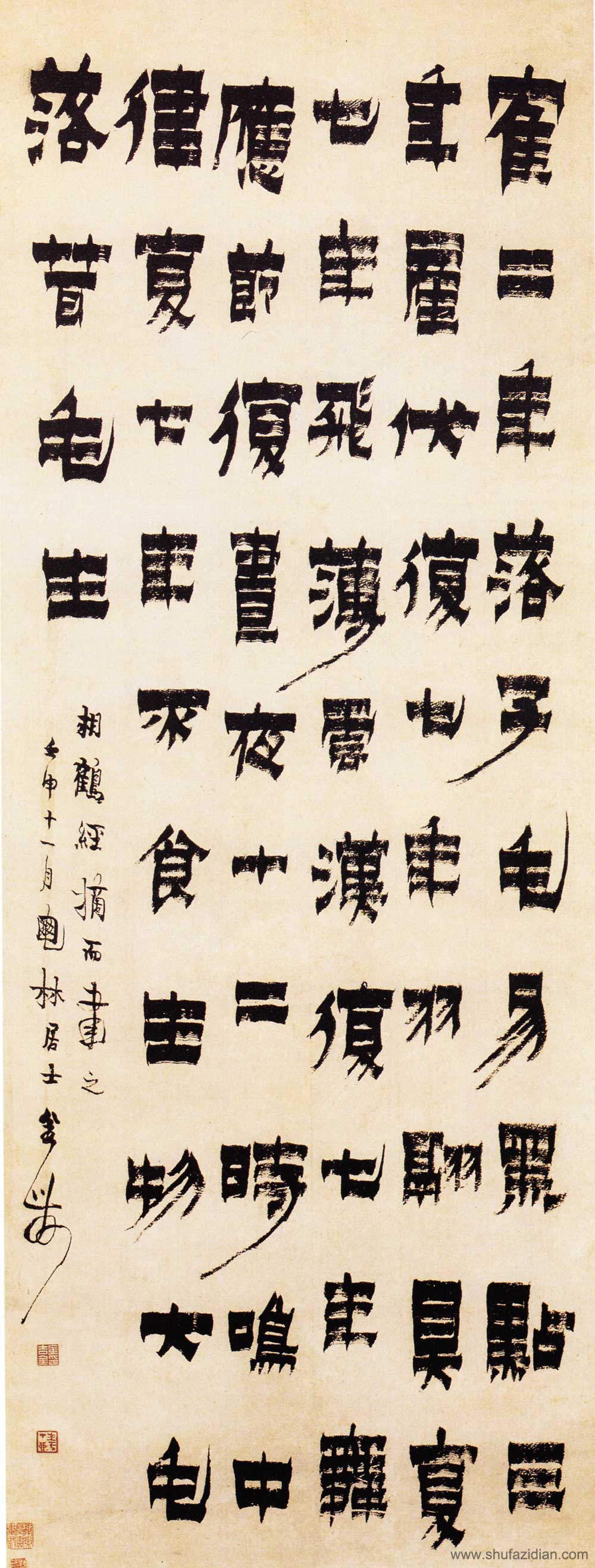
Lacquer calligraphy and crane scroll, paper, 1752, 156 cm long, 37 cm wide, collected by the Palace Museum, Beijing
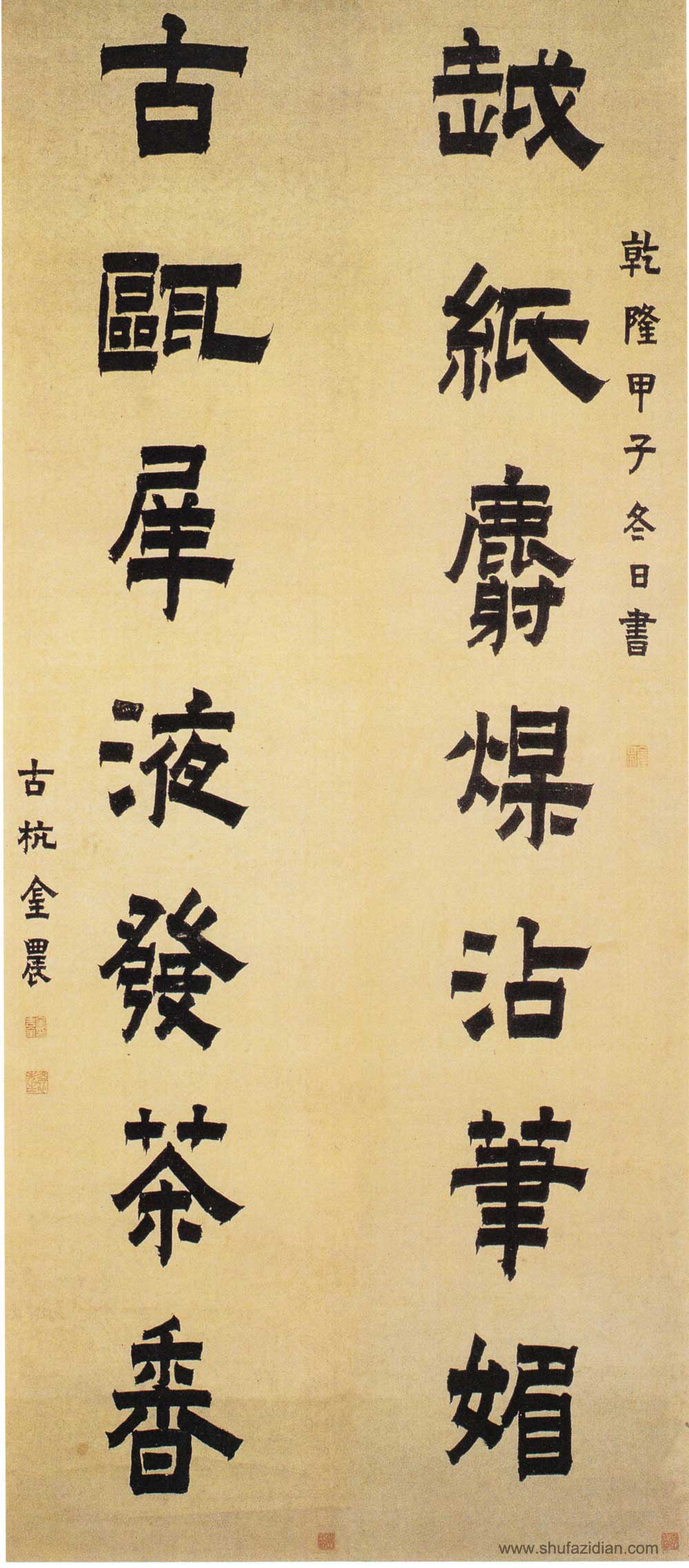
Ancient European seven-character couplet in lacquer calligraphy and Yue paper, 133*29cm*2, 133*29cm*2, 1744, collected by Shanghai Museum

Seven-character couplet on lacquer calligraphy and sparse flower paper, paper, length 125.9 cm, width 21.1 cm Written in 1752 Collection of Sichuan Provincial Museum
Jinnong is the core figure of the Eight Eccentrics of Yangzhou. He can be called a master in poetry, calligraphy, painting, sealing, music, appreciation, and collection. Jin Nong has studied calligraphy since he was a child and has a high level of literary attainments. His strong academic background made him the first among the "Eight Eccentrics of Yangzhou". However, Jin Nong's nature was indifferent, and his calligraphy works were very few in number compared to others among the Eight Eccentrics of Yangzhou. He lived in the three dynasties of Kang, Yong and Qian, so he gave himself the nickname "Old Citizen of the Three Dynasties". Jin Nong did not care about calligraphy at first, but he became the most accomplished among the "Eight Eccentrics of Yangzhou" in calligraphy. In particular, his running script and official script both have superb and unique aesthetic value. In his early years, his official script was "adhering to the Han people's shengmo" style, with regular style, thick and simple strokes, and the strokes were withdrawn before they were delivered. The structure is tight, with more restrained movements and less outward expansion. It has a simple and concise style, golden Nong's calligraphy art is known for its simplicity and simplicity. The lacquer calligraphy he pioneered is a special method of using pen and ink. "Jin Nong's ink" is as thick as lacquer, and the written words protrude from the paper. The brush used is like a flat brush, dipped in thick ink, and the strokes can only be bent but not turned, just like a brush for applying paint. The characters written in this way may seem vulgar and simple, without any structure at all, but they actually focus on the big picture and have a majestic charm. What best reflects the artistic realm of Jin Nong's calligraphy is his cursive writing. He integrated the writing style of regular script, the writing style of official script, and the style of seal script into cursive writing, making it self-contained and unique. His stippling is like official script or regular script, and the lines are also cursive. The long horizontal and vertical hooks are in the shape of official script, and the strokes of the strokes are often close to those of Wei stele, which are particularly vigorous and smart. Especially those poems and letters written by hand, which are simple and elegant, with a sincere and natural charm and artistic conception, which makes people put it down. Jin Nong's cursive script has been out of style since his early days, and the cursive script written with the stele method and his own "lacquer calligraphy" method is frank and free-spirited, with stippling and mellow pen and ink, and a thick head. There is a sense of youthfulness and naivety in the painting, which is admirable; its "scripture-writing and engraving" style of regular script seems to be in the same vein as folk calligraphy, with no light and heavy line changes, rounded turns of the pen, and no rhythm in the rhythm. Bo Tiao, with its uniform lines and square hard turns, writes a calligraphy that is similar to single-line art calligraphy, but also has the ancient mao of hieroglyphics. The inspirational significance of its calligraphy is far-reaching. Among the handwritten writings handed down from ancient times is "Measurement Like the Sea", which has now flowed into Japan. "Sheng Zhongjiao Zan", lacquer book on silk.

